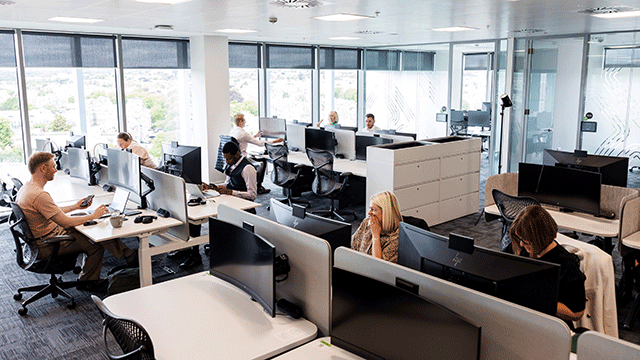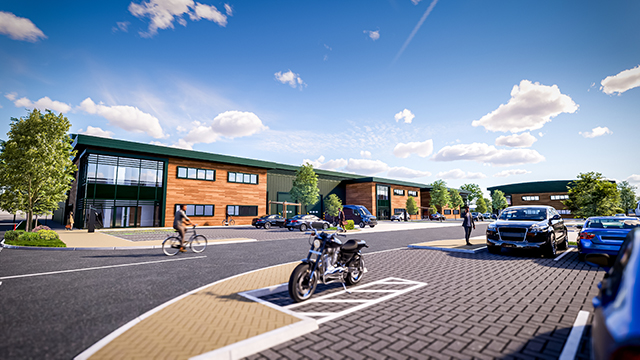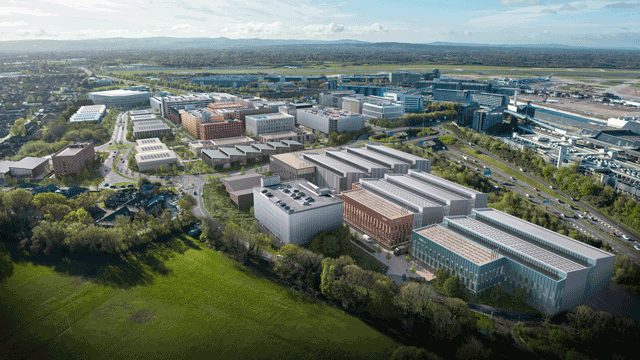COMMENT A report from the Office for National Statistics has shone a light on the wider importance of warehouse space to UK plc and the government’s levelling up plans.
According to the report, the UK’s transport and storage sector has almost doubled in the past decade, making it the fastest-growing broad industry group and a major contributor to the national economy.
With cities and large towns in the North and the Midlands among the places most in need of levelling up, the fact that the sector is now the largest industry in parts of the Midlands, the East and Yorkshire and the Humber, in terms of share of business units, makes it well positioned to play a pivotal role in strengthening local economies and building resilient communities.
Exceptional years
However, although the report points to a surge in demand for warehouse development, in reality, the current pipeline is unlikely to be sufficient to meet future demand. Put bluntly, if future market demand is not appropriately considered, the UK is facing a long-term shortage of logistics space that could restrict economic growth and undermine “levelling up”.
According to Savills, 2021 saw UK industrial and logistics take-up surpass 50m sq ft for the second year running, achieving another record for the sector in the process. But with vacancy rates now at 2.9%, how likely is it that this level of activity can be sustained in 2022?
While these may have been exceptional years, with Covid-19 accelerating the growth of e-commerce and putting renewed focus on supply chains, they are nevertheless reflective of a long-term trend. And, as striking as these figures are, there is a strong argument that real demand is actually far higher.
Earlier this year, St Modwen worked with Savills and the British Property Federation to unpick how a long-term shortage of warehouse space may have suppressed demand, with businesses simply unable to relocate or expand owing to a lack of available premises.
We found that if supply and demand were roughly in equilibrium, with national vacancy at around 8%, take-up would have been up to 29% higher than historical levels across the UK, and higher still around regional cities such as Manchester, Birmingham and Leeds.
In our view, this shows that the need for logistics space has been severely underestimated in UK planning policy for at least a decade. Increasing housing targets have accelerated the loss of industrial land, and national policy does not yet properly recognise how logistics space supports housing, and vice versa.
The delivery of logistics space often involves significant investment in infrastructure – be it access roads, improvements to existing highways or even rail connectivity – that makes residential development viable.
It also creates the jobs needed in areas of population growth. As warehouses have become more automated and tech-enabled, the nature of employment has changed. Analysis from the BPF shows that between 2010 and 2019 the number of professional and technical jobs increased by 300,000, with process and plant operative roles decreasing by 8,000 over the same period.
Tidying up
Then we have to consider changing consumer preferences and how these trends may evolve. It is estimated that the 300,000 new homes per year targeted by government would generate £1.3bn in additional annual online retail spend, and we are already seeing greater expectations around same-day and rapid delivery in major cities. As housing delivery accelerates, warehouse delivery must accelerate too.
In addition, it is often overlooked that logistics premises represent some of the UK’s most carbon-efficient employment space. The buildings are relatively lightweight and are constructed from steel, which is more easily recyclable than the concrete that is used in most other commercial building types. Logistics space is productive but also supports the transition to a greener economy and the UK’s path to net zero.
With reforms to the UK planning system now likely to come through a series of “tidying up” measures that will be introduced through levelling up legislation, it is crucial that the needs of the sector are fully recognised and understood.
With 70% of demand for space generated in the North and the Midlands, versus only 30% in the South, the industrial and logistics sector can support the government’s levelling up agenda, but only if it has the space it needs.
Polly Troughton is managing director of St Modwen Logistics











